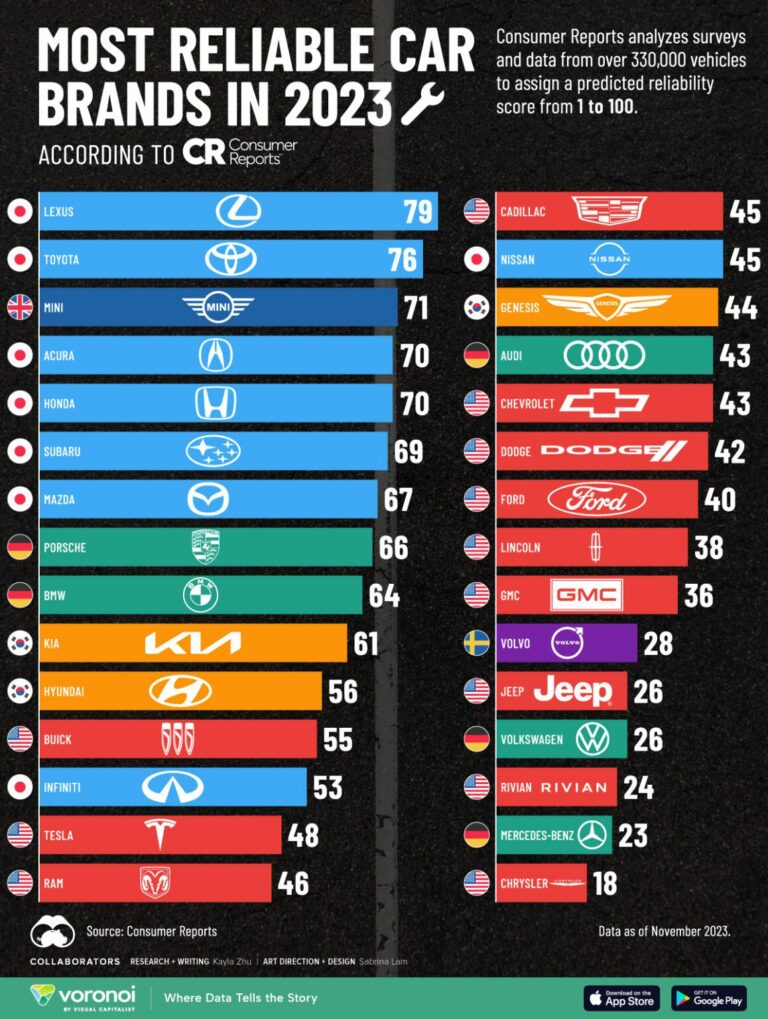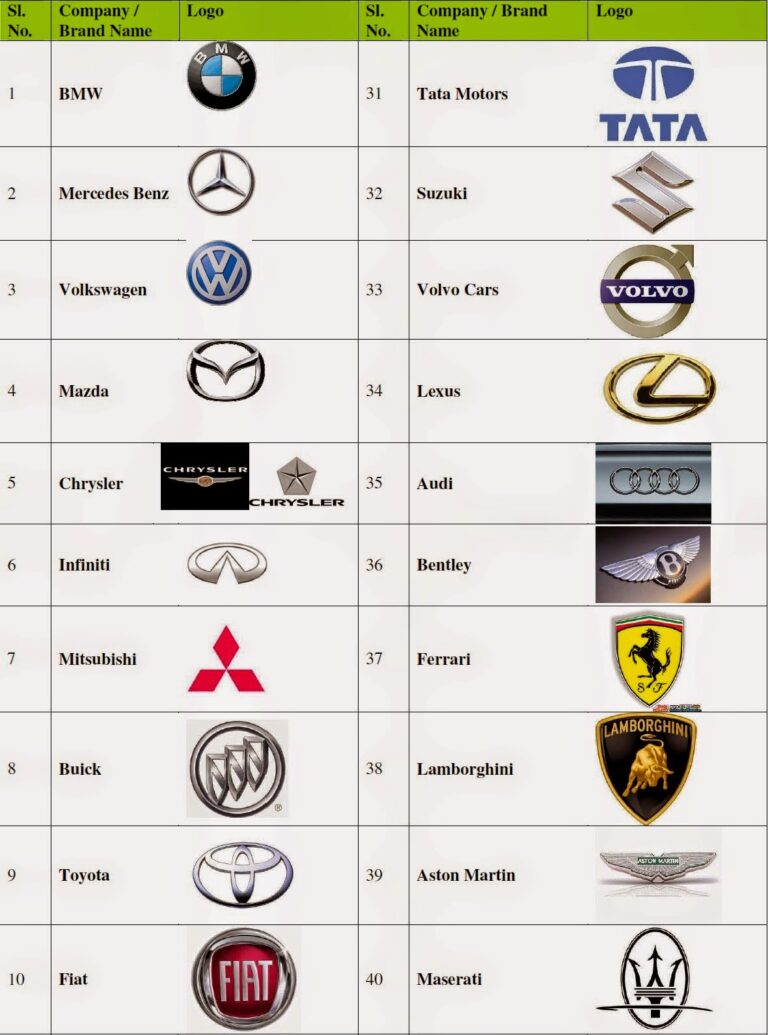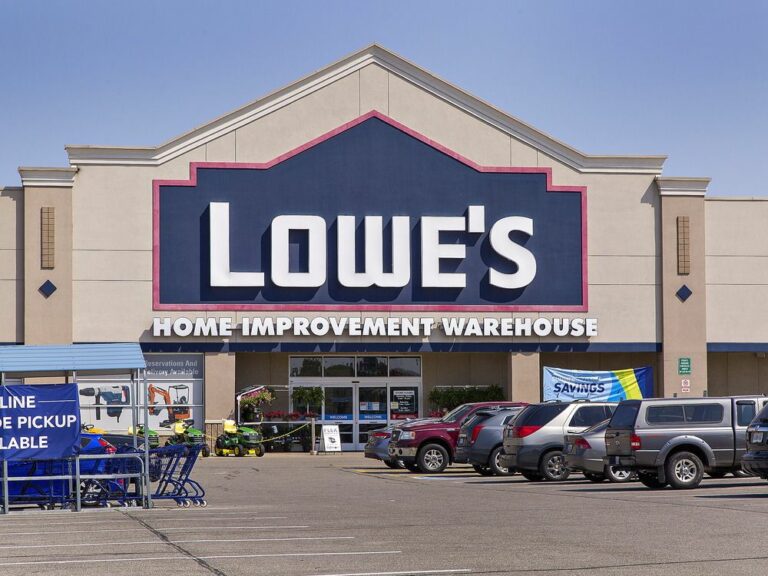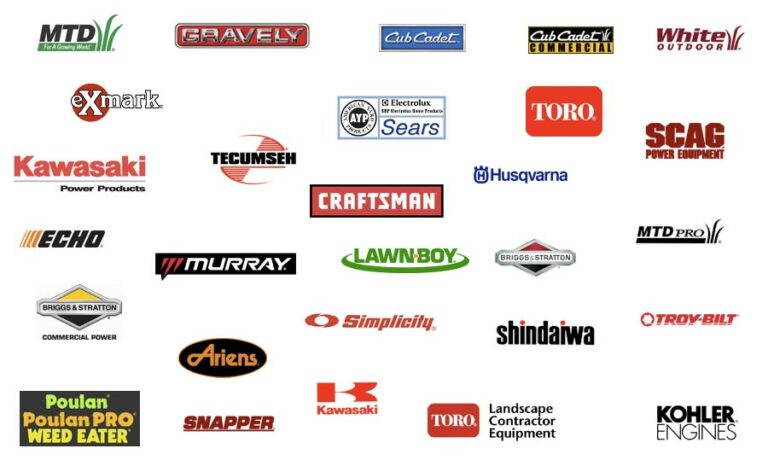Fiat Car Brand: A Comprehensive Guide to an Italian Automotive Icon
Fiat Car Brand: A Comprehensive Guide to an Italian Automotive Icon cars.truckstrend.com
Introduction: The Enduring Charm of Fiat
For over a century, Fiat has been more than just a car manufacturer; it has been a vibrant symbol of Italian ingenuity, style, and accessible mobility. Founded in Turin in 1899 as Fabbrica Italiana Automobili Torino (FIAT), the brand quickly rose to prominence, becoming synonymous with compact, characterful, and often pioneering vehicles. From its humble beginnings producing horse-drawn carriages and early automobiles, Fiat evolved into a global industrial powerhouse, playing a crucial role in Italy’s economic and social development. Today, as a pivotal brand within the Stellantis automotive conglomerate, Fiat continues to champion urban mobility, sustainable solutions, and that unmistakable Italian flair, solidifying its relevance in a rapidly changing automotive landscape. This comprehensive guide delves into the rich history, distinctive design philosophy, iconic models, and future trajectory of the Fiat car brand.
Fiat Car Brand: A Comprehensive Guide to an Italian Automotive Icon
The Genesis of an Icon: A Brief History of Fiat
The story of Fiat is one of relentless innovation, resilience, and adaptability. Giovanni Agnelli founded the company with a vision to motorize Italy, and early ventures extended beyond cars to include trucks, tractors, railway engines, and even aircraft. After the devastation of World War II, Fiat played a central role in Italy’s post-war economic miracle, focusing on affordable, mass-produced cars that put the nation on wheels.
The 1950s and 60s marked a golden age for Fiat, with the introduction of legendary models like the original Fiat 500 (Nuova 500) and the Fiat 600. These cars were not just modes of transport; they became cultural icons, embodying the spirit of Italian dolce vita – small, stylish, and perfect for navigating narrow European streets. Fiat’s engineering prowess also saw it expand globally, establishing manufacturing plants and licensing agreements across continents, particularly in Latin America and Eastern Europe.
Throughout the late 20th and early 21st centuries, Fiat faced various challenges, including fierce competition and shifting market demands. However, its strategic acquisitions, including Lancia, Alfa Romeo, and ultimately Chrysler (forming Fiat Chrysler Automobiles – FCA), demonstrated its ambition and capability for reinvention. The most recent and perhaps most significant chapter in Fiat’s history is its merger with PSA Group in 2021, creating Stellantis, the world’s fourth-largest automotive group. This alliance provides Fiat with unparalleled resources, shared platforms, and a global reach, positioning it strongly for the future.
Fiat’s Design Philosophy and Core Strengths
At the heart of every Fiat lies a distinct design philosophy that blends practicality with an undeniable sense of style. Italian design is globally renowned for its elegance, simplicity, and emotional appeal, and Fiat embodies these traits perfectly.
- Italian Flair & Character: Fiat cars are not merely appliances; they possess personality. Their designs often feature soft curves, friendly faces, and vibrant color palettes that evoke a sense of fun and individuality. This character is particularly evident in models like the Fiat 500, which has achieved iconic status through its timeless and charismatic design.
- Compact & Efficient Urban Mobility: Historically, Fiat has excelled in producing small, agile vehicles perfectly suited for congested city environments. This focus on compactness ensures ease of parking, maneuverability, and fuel efficiency, making Fiat cars ideal for urban dwellers.
- Accessibility & Value: Fiat has consistently aimed to make car ownership accessible to a broad audience. While offering a range of features and modern technology, many Fiat models are positioned as affordable and practical choices, providing excellent value for money.
- Innovation in Powertrains: From pioneering small-capacity engines to modern MultiAir and TwinAir technologies, Fiat has often focused on efficient and compact powertrain solutions. Today, this innovation is shifting towards electric propulsion, with the Fiat 500e leading the charge.
- Practicality and Versatility: Beyond style, models like the Panda and Tipo demonstrate Fiat’s commitment to practicality, offering surprisingly spacious interiors and versatile configurations for their respective segments.


Iconic Models and Their Enduring Impact
Fiat’s legacy is built upon a foundation of memorable and often groundbreaking vehicles that have shaped automotive history.
- The Original Fiat 500 (Nuova 500, 1957-1975): This tiny, rear-engined marvel is arguably Fiat’s most famous creation. It symbolized Italy’s post-war economic boom, offering affordable, charming transportation to the masses. Its compact size, simplicity, and lovable character made it an instant classic and a global phenomenon.
- The Modern Fiat 500 (2007-Present): Launched exactly 50 years after its predecessor, the modern 500 successfully reinterpreted the original’s charm for the 21st century. It became a fashion statement, a city car icon, and a global best-seller, proving that retro design done right can resonate deeply with consumers. Its success spawned derivatives like the larger 500L and 500X.
- Fiat Panda: Introduced in 1980, the Panda is a testament to functional design and practicality. Known for its boxy, no-nonsense approach, the Panda has consistently offered robustness, versatility, and surprising off-road capability (in its 4×4 variants). It remains a highly popular choice in Europe for its pragmatic appeal.
- Fiat Uno/Punto: These compact hatchbacks were instrumental in Fiat’s success in the 1980s and 90s, offering spacious interiors, good driving dynamics, and excellent value. They were mass-market champions, selling millions worldwide and establishing Fiat’s reputation in the competitive supermini segment.
- Fiat Tipo: Reintroduced in 2015, the Tipo represents Fiat’s commitment to offering practical, spacious, and well-equipped vehicles at an accessible price point. Available as a sedan, hatchback, and station wagon, it caters to families and those seeking value without compromising on essentials.
- Fiat 124 Spider: A modern homage to the classic 124 Spider from the 1960s, this two-seat roadster (developed in collaboration with Mazda) offers a blend of Italian style and engaging driving dynamics, appealing to enthusiasts seeking an affordable, fun convertible.
- Fiat Ducato: While primarily a commercial vehicle, the Ducato van deserves mention for its immense success and versatility. It’s a cornerstone of Fiat Professional (the commercial vehicle division) and a common sight on roads worldwide, underpinning countless businesses.

Technology and Innovation at Fiat
Fiat has consistently integrated technology to enhance efficiency, safety, and connectivity in its vehicles.
- Engine Technologies: Fiat has been at the forefront of compact engine development. Technologies like MultiAir (electro-hydraulic variable valve actuation) and TwinAir (a two-cylinder engine designed for extreme efficiency) showcased Fiat’s commitment to reducing emissions and fuel consumption without sacrificing performance.
- Electrification: The most significant technological leap for Fiat is its embrace of electrification. The Fiat 500e (New 500) represents a complete redesign from the ground up, built as a pure electric vehicle. It features advanced battery technology, impressive range for its class, and fast-charging capabilities, signaling Fiat’s decisive shift towards a sustainable future. This model is packed with modern infotainment (Uconnect 5) and advanced driver-assistance systems (ADAS).
- Infotainment & Connectivity: Modern Fiat models feature the Uconnect infotainment system, offering touchscreen interfaces, smartphone integration (Apple CarPlay, Android Auto), navigation, and connected services for a seamless user experience.
- Safety Features: Contemporary Fiats are equipped with a suite of active and passive safety features, including multiple airbags, ABS, ESC, and an increasing array of ADAS technologies like adaptive cruise control, lane keeping assist, blind-spot monitoring, and automatic emergency braking, bringing them in line with industry standards.
- Platform Sharing (Stellantis Synergy): Being part of Stellantis offers Fiat access to a vast array of shared platforms, powertrains, and technological innovations. This allows for greater efficiency in R&D and manufacturing, enabling Fiat to offer cutting-edge technology at competitive prices.
Fiat in the Global Market and Future Outlook
Fiat’s global presence has always been dynamic. While it holds a strong position in its home European market, particularly in Italy, its reach extends far beyond. Latin America, especially Brazil, is a crucial market where Fiat consistently ranks among the top-selling brands, offering a diverse range of locally produced models tailored to regional preferences. Its presence in North America, primarily through the 500 family, has been more niche, focusing on its distinctive style.
The future of Fiat is inextricably linked to Stellantis’s broader strategy, with a clear emphasis on electrification and sustainable mobility.
- Electrification as a Core Strategy: Fiat is committed to becoming a fully electric brand in Europe by 2030, with a significant push towards EV models in other regions. The success of the 500e is a blueprint for future electric vehicles, including a new electric Panda and potentially other compact urban EVs.
- Focus on Urban Mobility: Fiat will continue to leverage its expertise in creating smart, efficient, and stylish vehicles perfectly suited for city living. This includes not just cars but potentially micro-mobility solutions and innovative urban transport concepts.
- Brand Repositioning: Under Stellantis, Fiat is refining its brand identity, focusing on its core strengths of simplicity, sustainability, and the iconic "dolce vita" lifestyle. This includes expanding into new segments while maintaining its accessible and charming character.
- Synergies within Stellantis: The partnership within Stellantis provides Fiat with access to shared components, research and development, and global distribution networks, allowing it to compete more effectively and bring new products to market faster. Expect to see new Fiat models sharing platforms with Peugeot, Citroën, Opel, and Jeep vehicles, leading to more diversified offerings.
Practical Advice for Prospective Fiat Owners
Considering a Fiat? Here’s some practical advice:
- Identify Your Needs: Fiat offers a range of vehicles, from the ultra-compact 500e for city commuting to the more spacious Tipo for families, and the versatile Panda. Determine your primary use case – city driving, family transport, or something stylish and fun – to narrow down your options.
- Embrace the Character: Fiat cars often have a distinct personality. If you appreciate unique design, a lively driving experience (especially in the smaller models), and a car that stands out from the crowd, Fiat might be an excellent fit.
- Consider Electrification: If you’re in the market for an electric vehicle, the Fiat 500e is a compelling option. Research charging infrastructure in your area and understand the benefits of EV ownership (lower running costs, environmental impact).
- Test Drive Thoroughly: As with any car, a comprehensive test drive is crucial. Pay attention to driving dynamics, interior comfort, technology integration, and visibility.
- Research Specific Models & Trims: Within each model line, there are various trim levels and optional packages. Research which ones offer the features and value most important to you.
- After-Sales Support & Maintenance: Fiat has an established dealership network. Enquire about service intervals, warranty coverage, and the availability of parts. Generally, maintenance costs for Fiat models are competitive within their segments. Modern Fiat reliability has significantly improved due to shared platforms and manufacturing standards within Stellantis.
- Resale Value: Resale values can vary significantly by model and region. The Fiat 500, particularly its electric variant, tends to hold its value well due to its strong brand appeal.
Challenges and Solutions for Fiat
Despite its storied history and recent strategic shifts, Fiat faces ongoing challenges in the competitive automotive industry.
- Historical Perception: For some, older perceptions of reliability issues still linger.
- Solution: Modern Fiat vehicles, particularly those developed under FCA and now Stellantis, benefit from robust engineering, shared platforms, and rigorous quality control, significantly improving reliability and build quality. Emphasizing this improved quality through marketing and customer experience is key.
- Intense Competition: The compact car and city car segments, where Fiat traditionally excels, are highly competitive, with strong offerings from European, Asian, and American brands.
- Solution: Fiat must leverage its unique brand identity, Italian design heritage, and focus on specific niches (e.g., stylish urban EVs, practical value-oriented family cars) to differentiate itself. Synergies within Stellantis allow for more competitive pricing and technology.
- Adapting to the EV Transition: The shift to electric vehicles requires massive investment in R&D, manufacturing, and charging infrastructure.
- Solution: As part of Stellantis, Fiat has access to the necessary capital, technological expertise, and shared EV platforms (like STLA Small, Medium, Large) to accelerate its electrification roadmap. The successful launch of the 500e demonstrates its capability in this area.
- Global Market Expansion: While strong in Europe and Latin America, expanding its presence in other key markets like North America and Asia requires strategic planning and tailored product offerings.
- Solution: Within Stellantis, Fiat can leverage existing distribution networks and shared components to introduce new models relevant to these markets, potentially including larger vehicles or SUVs, while maintaining its core brand values.
Fiat Car Brand: Representative Price Table
Below is an illustrative price table for some popular Fiat models. Please note that prices are approximate and can vary significantly based on region, specific trim level, optional features, taxes, and current promotions. Always consult official Fiat dealerships for the most accurate and up-to-date pricing.
| Model | Type | Key Features | Starting Price Range (USD) |
|---|---|---|---|
| Fiat 500 (Petrol) | City Car / Subcompact Hatchback | Iconic retro design, nimble for city driving, fuel-efficient engines | $17,000 – $22,000 |
| Fiat 500e (Electric) | All-Electric City Car | Zero emissions, modern tech, distinct styling, impressive urban range | $32,500 – $40,000 |
| Fiat Panda | City Car / Compact Crossover | Practical, robust, versatile, available with 4×4, focus on utility | $15,000 – $20,000 |
| Fiat Tipo | Compact Car (Hatchback/Sedan/SW) | Value-oriented, spacious interior, comfortable ride, family-friendly | $20,000 – $28,000 |
| Fiat 500X | Compact SUV / Crossover | Higher driving position, available AWD, more spacious than 500, rugged styling | $28,000 – $35,000 |
| Fiat Ducato | Large Commercial Van | High payload, versatile configurations, popular for businesses & RV conversions | $40,000 – $60,000+ |
Disclaimer: The prices listed above are estimates for base models and can fluctuate based on market conditions, regional taxes, incentives, and chosen specifications. For precise pricing and availability, please contact your local authorized Fiat dealer.
Frequently Asked Questions (FAQ) about the Fiat Car Brand
Q1: Is Fiat a reliable car brand?
A1: Modern Fiat vehicles, especially those produced in recent years and under the Stellantis umbrella, have significantly improved in reliability. They benefit from shared platforms, components, and stringent quality controls across the group. While older models might have faced perception issues, contemporary Fiat cars are competitive in terms of dependability for their segments.
Q2: Where are Fiat cars manufactured?
A2: Fiat cars are manufactured in various locations globally. For example, the Fiat 500 (petrol) is often produced in Poland, while the new all-electric Fiat 500e is made in Turin, Italy. Models for the Latin American market are largely produced in Brazil, and the Fiat Ducato is manufactured in Italy.
Q3: What is the Fiat 500e?
A3: The Fiat 500e is the all-electric version of the iconic Fiat 500. It’s a completely new vehicle designed from the ground up as an EV, offering zero emissions, a modern interior, advanced technology, and a respectable range for urban and suburban driving. It represents Fiat’s commitment to electrification.
Q4: Is Fiat part of Chrysler?
A4: Fiat was previously part of Fiat Chrysler Automobiles (FCA). In 2021, FCA merged with PSA Group (Peugeot, Citroën, Opel, etc.) to form Stellantis. So, while Fiat is no longer a standalone entity that owns Chrysler, it is a key brand within the Stellantis group, which also includes Chrysler, Dodge, Jeep, Ram, Alfa Romeo, Lancia, and many others.
Q5: Are Fiat cars good for families?
A5: While the traditional Fiat 500 is a city car best suited for singles or couples, models like the Fiat Tipo (available as a hatchback, sedan, and station wagon) and the Fiat 500X crossover are designed to be spacious and practical, making them suitable choices for small to medium-sized families. The Fiat Panda also offers surprising versatility for a compact car.
Q6: What is Fiat’s focus for the future?
A6: Fiat’s future is primarily focused on electrification and sustainable urban mobility. The brand aims to become fully electric in Europe by 2030, with new EV models and connected services. It will continue to leverage its strength in designing charming, compact, and efficient vehicles for city environments, while also exploring new segments within the Stellantis framework.
Concluding Summary: Fiat’s Enduring Legacy and Bright Future
From its inception over a century ago, Fiat has consistently demonstrated a remarkable ability to innovate, adapt, and charm. It has transitioned from a pioneer of early automobiles to a global powerhouse that motorized nations with its iconic, accessible, and characterful vehicles. Today, as a vital component of the Stellantis group, Fiat is undergoing another significant transformation, embracing electrification and sustainable mobility as its core pillars.
The Fiat brand remains synonymous with distinctive Italian design, smart urban solutions, and an undeniable sense of personality. Whether it’s the timeless charm of the Fiat 500, the pragmatic versatility of the Panda, or the forward-looking technology of the 500e, Fiat continues to offer compelling choices for drivers who seek more than just transportation – they seek a car with soul. With the resources and strategic vision of Stellantis behind it, Fiat is well-positioned to continue its legacy of innovation and bring its unique blend of style and practicality to a new generation of drivers in an increasingly electric world.






